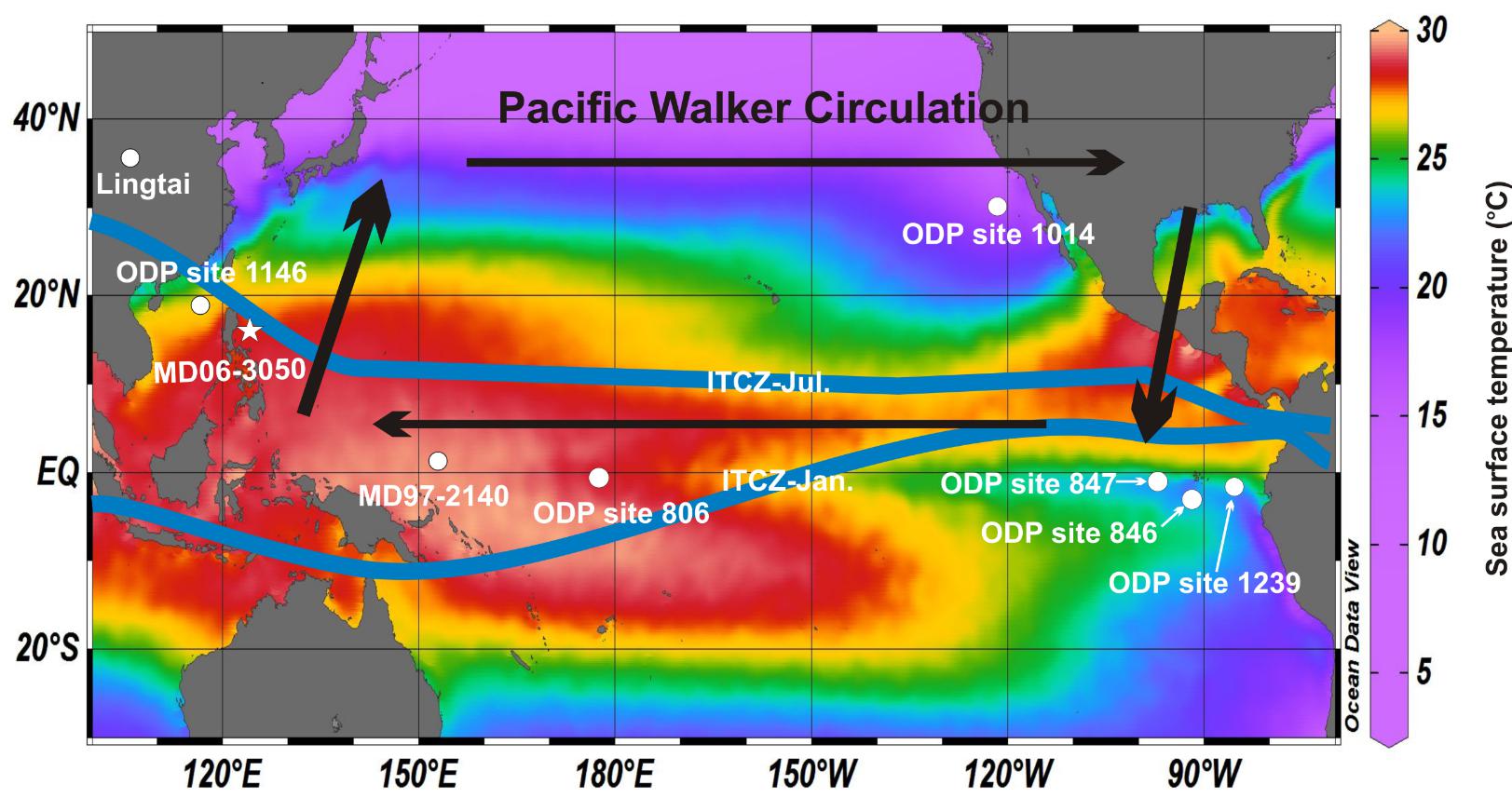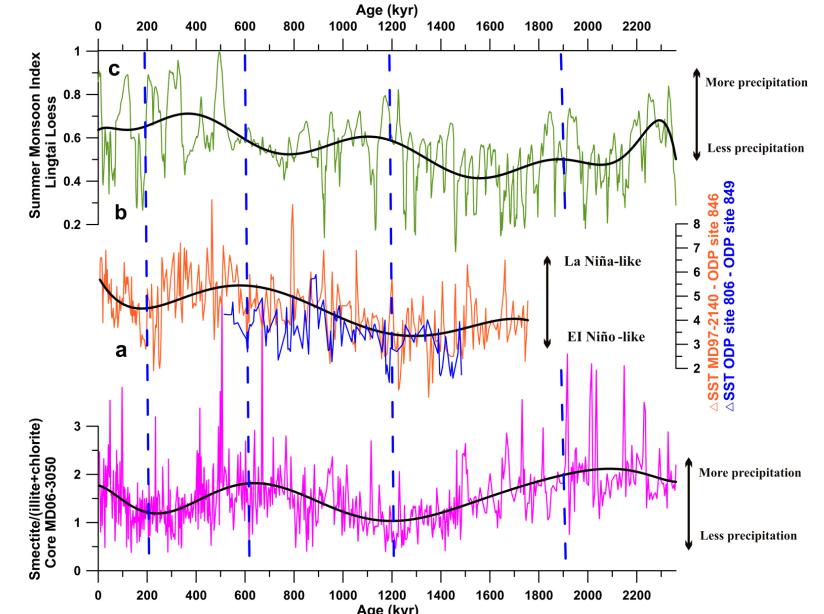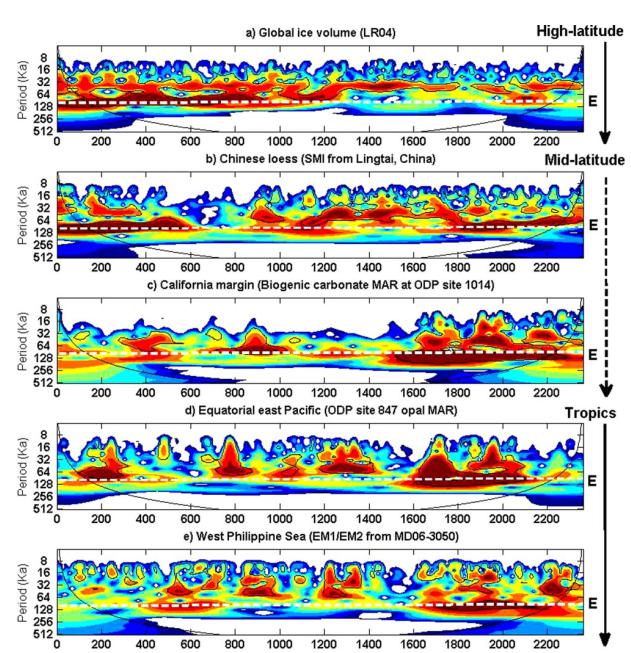New Breakthrough in long-term evolution of Asian summer monsoon precipitation
The East Asian monsoon is one of the major components of the global climate system which controls the atmospheric heat budget and moisture in the Northern Hemisphere. Previous studies have shown that increased zonal sea surface temperature (SST) gradients and Walker Circulation Strengthening between 1.2 and 0.8 Myr would have reduced heat flux, but would also have supplied more moisture to polar regions, which might have been responsible for the growth of the global ice sheet during the MPT (de Garidel-Thoron et al., 2005; McClymont & Rosell-Mel e, 2005). Thus, in order to improve our understanding of the mechanisms involved in the tropical Pacific atmosphere-ocean system, it is crucial to determine the internal feedback processes related to global heat and moisture balances between tropical zones and the Polar Regions.
Vice Prof. Zhaojie Yu and Prof. Shiming Wan from IOCAS use long sediment cores from IMAGES project in the West Philippine Sea to reconstruct the first high-resolution East Asian summer monsoon precipitation record in West Philippine Sea over the past 2.36 Ma. They further integrate the summer monsoon record from ODP Site 1146 and magnetic susceptibility record from Chinese loess. They demonstrate that periods of reduced rainfall on Luzon Island are associated with higher precipitation in central China and a weakening zonal SST gradient in the equatorial Pacific Ocean, thereby suggesting the development of dominant El Ni?o-like conditions. While the intervals of rainfall intensification on Luzon Island are coeval with a reduction in precipitation over central China and an increase in zonal SST gradient in the equatorial Pacific Ocean, implying a reinforcement of La Ni?a-like conditions. These results highlights for the first time a long-term temporal and spatial co-evolution of monsoonal precipitation in East Asia and of the tropical Pacific ENSO system over the past 2.36 Ma.
The variations of monsoon precipitation in these time intervals were further linked to the tropical Pacific climate changes, including evolution of Walker Circulation intensity (ENSO-like variations) and in particular the upwelling intensity (opal MAR from ODP Sites 846 and 847) in the eastern equatorial Pacific. The high-latitude cooling is considered as a key factor that drives the long-term variations in the tropical Pacific climate changes. Wavelet analysis of the ENSO-like influenced records in the mid-latitude (Chinese loess and California upwelling) and low-latitude (ODP Site 847 and core MD77–3050) reveal a strong 100 kyr dominant period from 2.2 to 1.6 Myr. Such result indicates that the ENSO-like records in the mid-latitude and low-latitude have prevailed 100 kyr cycle before the MPT. The ENSO-like system probably act as a key role for the internal energy balance of the earth and further influenced the global climate change during the Quaternary
The study was supported by the National Natural Science Foundation of China, Aoshan Talents program of Qingdao National Laboratory for Marine Science and Technology.
Reference papers mentioned:
1. Zhaojie. Yu (*), Wan, S., Colin, C., Song, L., Zhao, D., Huang, J., Li, T. (2018). ENSO-like modulated tropical Pacific climate changes since 2.36 Myr and its implication for the Middle Pleistocene Transition. Geochemistry, Geophysics, Geosystems, 19. https://doi.org/10.1002/2017GC007247
Link:https://agupubs.onlinelibrary.wiley.com/doi/abs/10.1002/2017GC007247
2.Zhaojie. Yu(*), Wan, S., Colin, C., Yan, H., Bonneau, L., Liu, Z., et al. (2016). Co-evolution of monsoonal precipitation in East Asia and the tropical Pacific ENSO system since 2.36 Ma: New insights from high-resolution clay mineral records in the West Philippine Sea. Earth and Planetary Science Letters, 446, 45–55
Link:https://www.sciencedirect.com/science/article/pii/S0012821X16301868

Figure 1 locations of MD06-3050 and other cores mentioned in the study.

Figure 2 Long-term evolution of East Asia summer monsoon rainfall in the mid- and low-latitude East Asia in comparing with the zonal SST gradient.

Figure 3 Wavelet analysis of ENSO influenced records and ice volume. Note that the mid-latitude (Chinese loess and California upwelling) and low-latitude (ODP Site 847 and core MD77–3050) reveal a strong 100 kyr dominant period from 2.2 to 1.6 Myr.